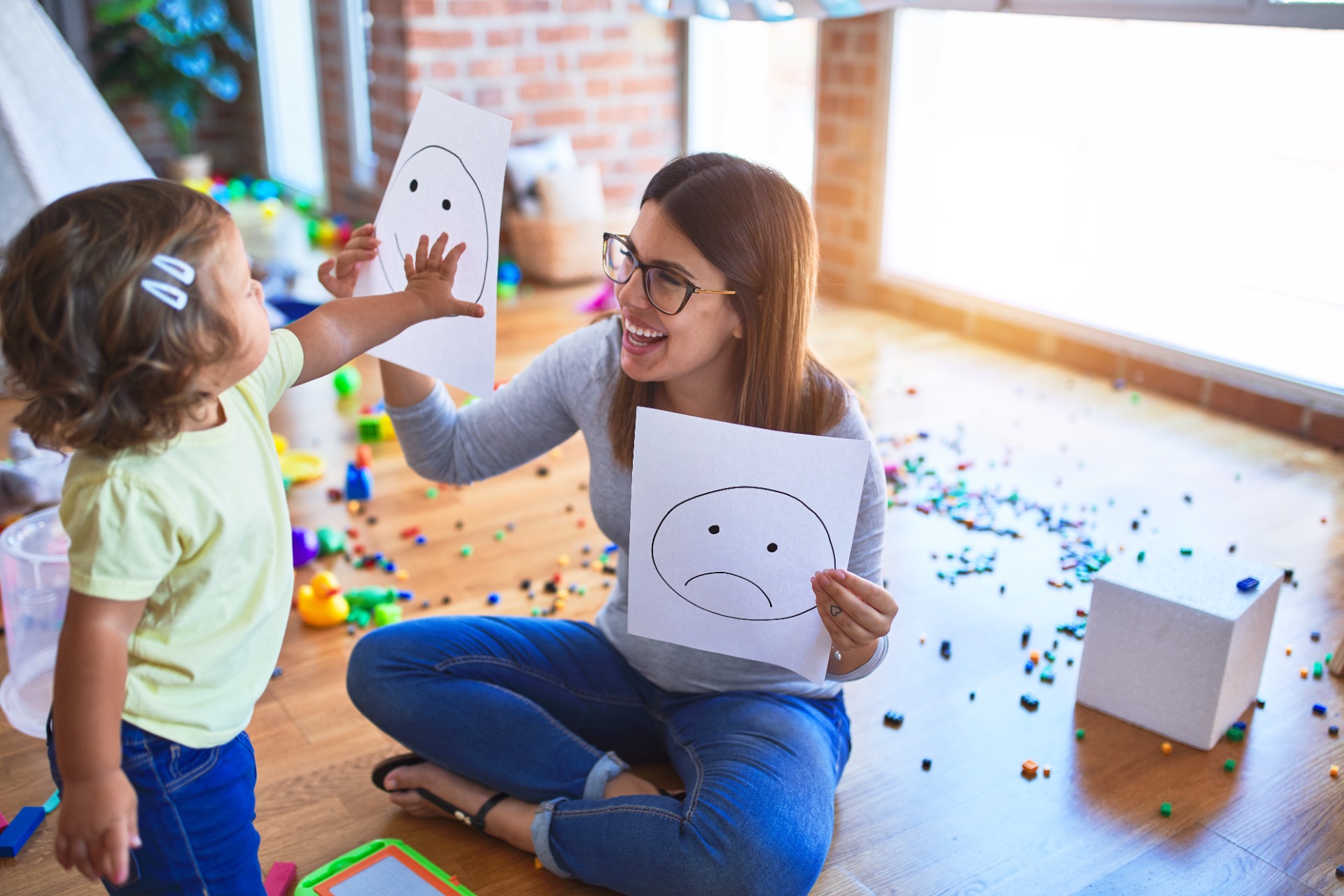Emotions: How to talk to children about them and why it's important

Humans show emotions from birth. Small babies express their (dis)satisfaction with the given condition by means of humming or crying, from 3 months they already smile. At around 7 months, when they start to realize that they are alone in a room, they start to feel fear (manifested as separation anxiety). And at the moment when the baby begins to be mobile and shows efforts for independence, the dreaded outbursts of anger begin to appear.
As we mentioned in the previous article Why children get angry and how to manage angry outbursts, the key to reducing anger in (not only) young children is to teach them to recognize their emotions and work with them. Or teach them emotional self-regulation. This ability is not innate, and even many adults struggle with it. At the same time, this ability is crucial for our social life. So the first step to successfully mastering emotional self-regulation is to start talking with children about emotions and teach them to recognize them.
Start with basic emotions
There is no need to immediately explain all possible emotions and their complexity to children and toddlers. It is best to start with the basic emotions that children themselves know well. They are joy, anger, sadness and fear. All these emotions have clear expressions (laughter, scream, cry) and are also manifested in a typical facial expression. So how to introduce the given emotions to the child?
- Include emotions in your vocabulary: Talk about your feelings during a conversation with your child (e.g. I'm angry because you're throwing toys, or I'm happy because you're eating so well.). Don't forget to include your facial expressions when expressing your feelings. The baby learns to identify the given emotions through observation.
- Describe your child's emotions: If your child does not yet have a sufficiently developed vocabulary, try to describe his emotions for him (eg. You seem angry because I don't want to borrow your phone., or Here is someone happy because they have ice cream.).<br>
- Talk about other people's feelings: When the child can talk a little, ask him how the people around him feel, or stop while reading and talk about the feelings of the characters in your story.
- Use books or games about emotions: There are many children's books about emotions on the market, as well as various activities for learning about emotions. Or just take a pencil and paper or a magnetic board, paint a face with a certain expression and let the child name the emotion.
- Be an example: As in everything else, parents must lead by example. How we react in different situations (especially in unpleasant ones) determines how our child will react. If our first reaction to something unpleasant is shouting and aggression, we can't be surprised that the child on the playground repeats it.

Be understanding with children
But what is most important for the emotional development of children is the understanding of parents. Expressions of joy are pleasant for everyone, but when there is screaming or hysterical crying, parents sometimes need to end these expressions as quickly as possible. Children are often punished for their anger and their grief is sometimes downplayed. Even if it's not always pleasant, try to do the work and find out why the child feels that way. Let's show understanding for his reaction and calmly explain to him why it's time to leave the playground or why he can't take other people's toys without permission. Only in this way will the child be sure that he has support in you and will be one step closer to being able to control his emotions and talk openly about them.
Did you like our article and would you like to be notified of new articles? Subscribe or follow us on Facebook and Instagram.
Who writes articles for you

Interesting reading about education and development of children is prepared for you (us) by Katka. Katka is currently on maternity leave with her 2-year-old daughter Emilka. Reflections on parenthood are her daily bread. Moreover, she enjoys writing immensely and finds it creatively fulfilling. When she has a moment away from her parenting duties, she likes to read a nice book (genre doesn't play a role) or unwind with a yoga session.
